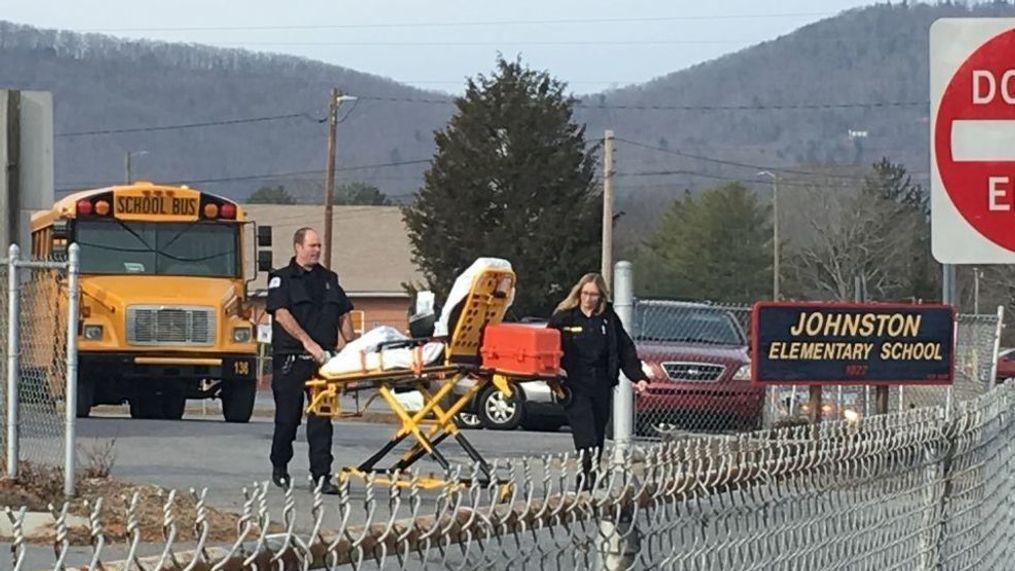Table of Contents
- NC Empowers EMS Personnel with Pepper Spray Authorization
- Safety Protocols and Training Requirements for EMS Pepper Spray Use
- Legal Implications and Guidelines for On-Duty Pepper Spray Deployment
- Best Practices for EMS Agencies Integrating Pepper Spray in Emergency Responses
- In Conclusion
NC Empowers EMS Personnel with Pepper Spray Authorization
Starting in 2025, EMS personnel across North Carolina will be legally permitted to carry pepper spray while on duty. This groundbreaking measure aims to enhance the personal safety of emergency medical workers who often operate in unpredictable and potentially hazardous environments. The new authorization reflects growing recognition of the risks EMS staff face and demonstrates a commitment to equipping them with non-lethal tools for self-defense without compromising patient care.
Under this initiative, EMS workers must complete a state-approved training program covering the proper use, legal implications, and safety protocols for carrying pepper spray. Key aspects of the policy include:
- Strict usage guidelines ensuring pepper spray is employed only when necessary to prevent harm.
- Mandatory reporting procedures following any deployment of pepper spray during service calls.
- Collaboration with local law enforcement to maintain oversight and support for EMS personnel’s safety measures.
Safety Protocols and Training Requirements for EMS Pepper Spray Use
To ensure responsible and effective use, all EMS personnel authorized to carry pepper spray will undergo rigorous training programs designed specifically for emergency medical contexts. This training includes proper handling techniques, situational awareness, and de-escalation tactics to minimize harm and avoid unnecessary deployment. Additionally, EMS workers will be educated on recognizing appropriate scenarios for pepper spray use, emphasizing the importance of restraint and adherence to legal guidelines.
Compliance monitoring will be a key component of the new protocol, with agencies required to implement regular refresher courses and detailed reporting procedures following any deployment. EMS supervisors will conduct reviews to ensure adherence to safety standards, while mandatory documentation will provide accountability and continuous improvement opportunities. This framework aims to balance the safety of EMS personnel with the protection of patients and bystanders.
Legal Implications and Guidelines for On-Duty Pepper Spray Deployment
With the 2025 authorization granting EMS workers in North Carolina the right to carry pepper spray during their shifts, strict legal boundaries and operational guidelines have been established to ensure responsible use. EMS personnel must undergo comprehensive training that covers the legal framework regulating defensive tactics, emphasizing proportionality and necessity in deployment. The use of pepper spray is limited exclusively to situations where EMS workers face an immediate threat to their safety, with clear documentation and reporting protocols mandated after each incident. This ensures accountability while reinforcing the principle that pepper spray is a tool of last resort, not a means of escalation.
To safeguard both the rights of patients and EMS workers, the guidelines specify conditions such as:
- Strict prohibition against use on vulnerable populations unless under extreme threat.
- Mandatory review of every deployment incident by supervisory staff within 24 hours.
- Clear instructions on proper storage and accessibility of pepper spray while on duty.
These measures aim to integrate the defensive tool into EMS operations without infringing on civil liberties, ensuring that the safety of responders does not come at the expense of patient care or legal compliance.
Best Practices for EMS Agencies Integrating Pepper Spray in Emergency Responses
EMS agencies adopting pepper spray as part of their emergency response toolkit must focus on comprehensive training programs to ensure safe and effective use. Personnel should be thoroughly educated on the legal implications, proper deployment techniques, and the physiological effects of pepper spray on individuals. Scenario-based training can help providers make quick judgments under pressure, minimizing risks to patients and bystanders alike. Additionally, agencies should establish clear protocols outlining when and how pepper spray is authorized, ensuring adherence to local laws and departmental policies.
Integrating pepper spray also requires robust communication and documentation strategies. EMS providers should always notify law enforcement when pepper spray is used, fostering coordination and support during potentially volatile situations. Detailed incident reports must be maintained to track usage patterns and evaluate effectiveness, contributing to ongoing policy refinement. Agencies are encouraged to involve legal advisors and medical experts in policy development to balance responder safety with patient care considerations.
- Implement mandatory refresher courses and certification renewals
- Ensure easy access to decontamination kits for quick patient relief
- Maintain strict inventory control over issued pepper spray devices
- Promote inter-agency collaboration to unify response standards
In Conclusion
As North Carolina moves into 2025, the authorization for EMS workers to carry pepper spray on duty marks a significant shift in emergency response protocols. This measure aims to enhance the safety of first responders while maintaining their ability to provide critical care in challenging situations. As implementation begins, ongoing evaluation will be essential to ensure that the policy effectively balances protection with the principles of professional emergency medical service.Check Our Other Blogs
- StunGun – Your Trusted Source for Stun Guns, Laws, and Self-Defense Tips
- PepperSprayLaws – Your Trusted Resource for Pepper Spray Information
- StunGunLaws – Your Trusted Guide to Stun Gun Legality and Safety




